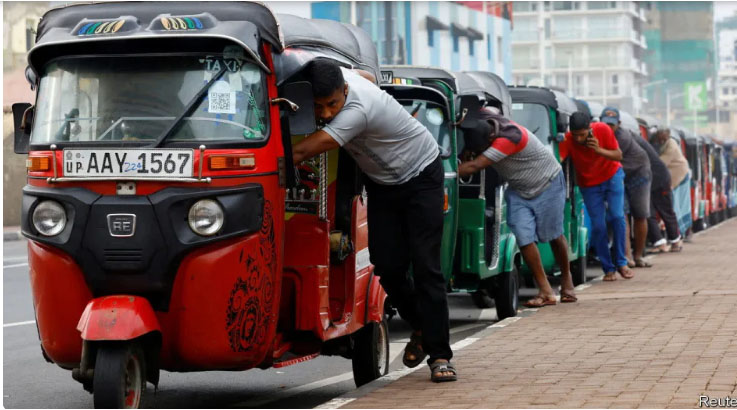THE JOURNEY from Bandaranaike Airport, Sri Lanka’s main international hub, to Colombo, its capital and biggest city, has been a smooth one ever since a new elevated highway was opened nearly a decade ago. But once in the city, warns the latest edition of a popular guidebook, “streets remain as congested as ever during the day so add plenty of time”.
Not in July. Gone were the traffic snarls and gridlock. Instead, it was at the edges of the roads that vehicles gathered, as though an automotive Moses had parted the great mass of cars and auto-rickshaws. Those were queues for fuel, extending as far as the eyes could see.
In May Sri Lanka in effect ran out of foreign exchange and defaulted on its external debt. Imports were severely restricted. Prices rocketed. And at the end of June, the bankrupt country suspended sales of fuel except to the emergency services and others doing essential work. Though sales started again in July, supplies remained limited and caps were imposed on how much each customer could buy. Some drivers queued for days before they reached the front of the line. Many resorted to buying fuel on the black market, where it cost five or six times the official rate.
To illustrate the scale of the crisis, The Economist asked Maxar, an American company that photographs much of the planet every day, for satellite images of central Colombo, focused on a pair of petrol stations.
This image shows a Lanka IOC petrol station in Havelock Town, a well-to-do commercial and residential district, on May 30th. The economy was spiralling downwards and traffic had already thinned, but the worst was yet to come. Queues had started forming, but they were still modest.
On July 13th, as fuel started trickling in, the queues snaked around the block in every direction. Crowds gathered on the forecourt. That same day Gotabaya Rajapaksa, the president, fled the country ,going first to the Maldives and then to Singapore before resigning. A few days earlier, on July 9th, angry protesters had occupied the president’s residence and office.
Nor were the queues a reflection of a paucity of pumps, rather than petrol. Another around the corner had similar queues forming on May 30th.
By July 13th, every stretch of shoulder leading up to the petrol station was crammed with patiently waiting motorists. Elsewhere in the city (not in this image), long queues of people waited for canisters of cooking gas.
The shortages were the product of years of poor policy-making. In 2019 Mr Rajapaksa had slashed taxes, The pandemic hit the following year and devastated the tourism industry, a big source of foreign currency. An ill-conceived fertiliser ban in 2021 hit farm yields and agricultural exports. It was hastily repealed, but the damage had been done. Rather than own up to its mistakes, the government insisted on pretending .
everything was fine and spent the last of its reserves servicing debt and propping up the currency.
By May the country was staring into the abyss. Mr Rajapaksa’s brother Mahinda, the prime minister, resigned and was replaced by Ranil Wickremesinghe (his sixth time in the job). When Gotabaya resigned last month, Mr Wickremesinghe replaced him as president. Mr Wickremesinghe has been honest with his citizens, admitting that the country is bankrupt, and that the road to recovery will be a hard one.
By early August, the queues had disappeared. These images show both petrol stations on August 14th. The roads around them are clear. That is not because Sri Lanka had received a big infusion of cash or fixed its economy. But on August 1st Mr Wickremesinghe’s government introduced a better system for distributing fuel, whereby motorists register online and receive a QR code on their phones entitling them to a weekly ration. The authorities are also cracking down on hoarding and black marketeering. That has helped ease the sense of crisis, if not its root causes.
Mr Wickremesinghe has ambitious plans. He is negotiating a bailout with the IMF, which would provide more cash for imports like petrol. He promises a host of economic reforms. But even eliminating the giant queues, if only by a more efficient system of rationing, is a step forward.
(curtesy the Economist news paper)
